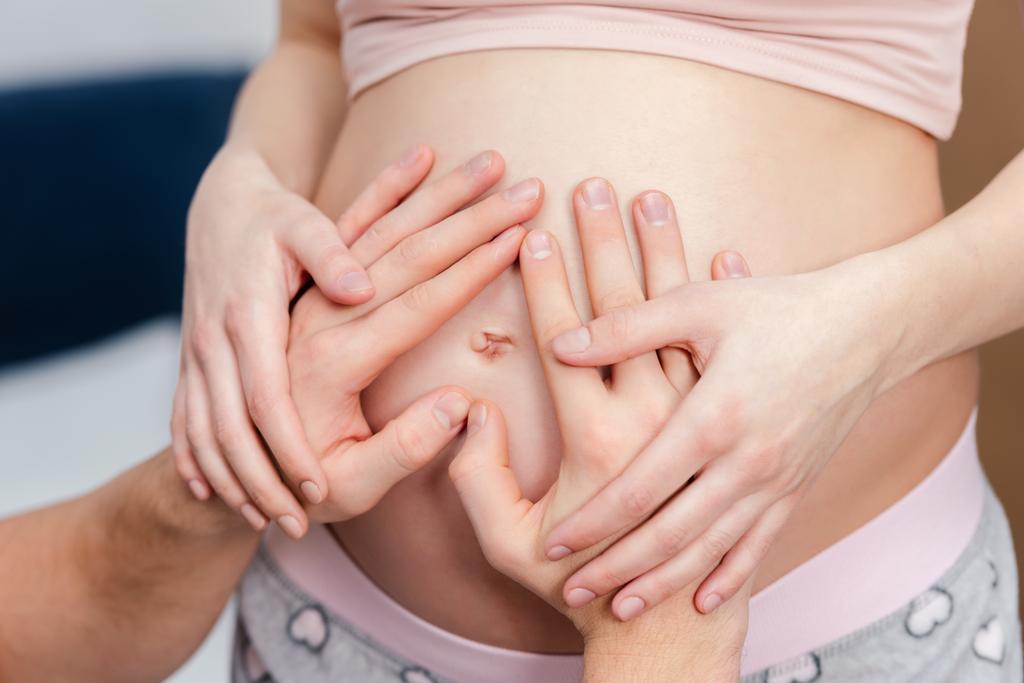Pregnancy is an incredible and transformative journey that unfolds in three distinct phases, known as trimesters. Each trimester brings its own set of changes and developments for both the mother and the growing baby. In this comprehensive guide, we will explore the unique characteristics of each trimester, offering insights into the physical and emotional aspects of pregnancy.
First Trimester: Weeks 1 to 12 – The Foundation of Life
The first trimester marks the beginning of the miraculous journey of pregnancy. Here’s a closer look at the key features and experiences during this initial phase:
- Conception and Implantation: The first trimester begins with conception, where the egg is fertilized by sperm, forming a zygote. The zygote then travels down the fallopian tube and implants itself into the uterine lining.
- Cell Division and Embryo Formation: Rapid cell division occurs, leading to the formation of the embryo. By the end of the first month, basic structures such as the heart, brain, and spinal cord begin to take shape.
- Development of Major Organs: During the second month, major organs and systems continue to develop. The heart starts beating, and the embryo takes on a more recognizable human form.
- Morning Sickness and Hormonal Changes: Many women experience morning sickness, nausea, and fatigue during the first trimester. Hormonal changes, including increased levels of progesterone, contribute to these symptoms.
- Emotional Roller Coaster: Hormonal fluctuations may also lead to mood swings and heightened emotions. It’s common for expectant mothers to feel a mix of excitement, anxiety, and anticipation.
- First Prenatal Checkup: Early prenatal care is crucial. During the first trimester, expectant mothers typically have their first prenatal checkup to confirm the pregnancy, estimate the due date, and address any initial concerns.
- Formation of Placenta and Umbilical Cord: Toward the end of the first trimester, the placenta and umbilical cord are well-formed, taking over the role of providing essential nutrients and oxygen to the developing baby.
Second Trimester: Weeks 13 to 26 – The Golden Period
Often considered the “golden period” of pregnancy, the second trimester is characterized by a sense of relief from the initial challenges. Here are the key highlights of this stage:
- Visible Bump and Fetal Movement: The baby’s growth becomes more noticeable, and many women experience the first sensations of fetal movement, often described as flutters or gentle kicks.
- Reduced Morning Sickness: For many expectant mothers, the nausea and fatigue associated with the first trimester begin to subside, leading to increased energy levels.
- Baby’s Facial Features Develop: The baby’s facial features become more defined, and the skeleton transforms from cartilage to bone.
- Gender Reveal: Around the midpoint of the second trimester, an ultrasound may reveal the gender of the baby, if desired.
- Maternal Weight Gain: Healthy weight gain is expected during pregnancy. The second trimester is a time when many women experience a gradual increase in weight as the baby continues to grow.
- Linea Nigra and Skin Changes: Some women notice the appearance of the linea nigra, a dark line running down the abdomen. Skin changes, including darkening of the areolas and the development of the “pregnancy glow,” may also occur.
- Increased Blood Volume: Blood volume continues to increase to support the growing baby. This may lead to changes in blood pressure and increased blood flow to various organs.
- Prenatal Screenings and Tests: Certain prenatal screenings and tests, such as the anatomy ultrasound and glucose tolerance test, may be conducted during the second trimester to monitor the baby’s development and assess maternal health.
Third Trimester: Weeks 27 to 40 – The Countdown Begins
As the due date approaches, the third trimester brings the anticipation of meeting the baby. Here are the significant aspects of this final stage:
- Fetal Viability: At the beginning of the third trimester, the baby reaches a stage of development where, with medical support, they could survive outside the womb. This stage is known as fetal viability.
- Rapid Brain Development: The baby’s brain undergoes rapid development, preparing for life outside the womb. The lungs continue to mature, producing surfactant to help with breathing.
- Increased Fetal Movement: As the baby grows larger and has less space to move around, their movements may feel stronger and more noticeable.
- Pelvic Discomfort and Backaches: The growing baby and the increased weight may lead to pelvic discomfort and backaches. Finding comfortable positions and practicing prenatal exercises can help alleviate discomfort.
- Preparation for Labor: Braxton Hicks contractions, also known as practice contractions, may become more noticeable. These contractions help prepare the uterus for labor.
- Nesting Instinct: Many expectant mothers experience a nesting instinct, a surge of energy and motivation to prepare the home for the baby’s arrival.
- Regular Prenatal Checkups: The frequency of prenatal checkups may increase in the third trimester. Healthcare providers monitor the baby’s position, check for signs of labor, and address any concerns.
- Childbirth Classes and Birth Plan: Many expectant parents choose to attend childbirth classes during the third trimester to learn about the birthing process and pain management techniques. Creating a birth plan that outlines preferences for labor and delivery is also common during this stage.
- Emotional Preparation: The approaching due date often brings a mix of emotions, ranging from excitement to nervousness. Connecting with a support system and discussing expectations with a healthcare provider can help ease anxieties.
Conclusion: Embracing the Journey
In conclusion, the journey through pregnancy trimesters is a remarkable and transformative experience. From the early days of conception to the final countdown before birth, each trimester unfolds with its own set of milestones and challenges. As you navigate the changes in your body and emotions, remember that every pregnancy is unique.
Seeking prenatal care, maintaining a healthy lifestyle, and staying connected with your healthcare provider contribute to a positive and well-supported pregnancy journey. Embrace the joy, excitement, and anticipation that come with each trimester, and cherish the incredible journey of bringing new life into the world. Congratulations on this special chapter, and may the days ahead be filled with health, happiness, and the beauty of parenthood.










